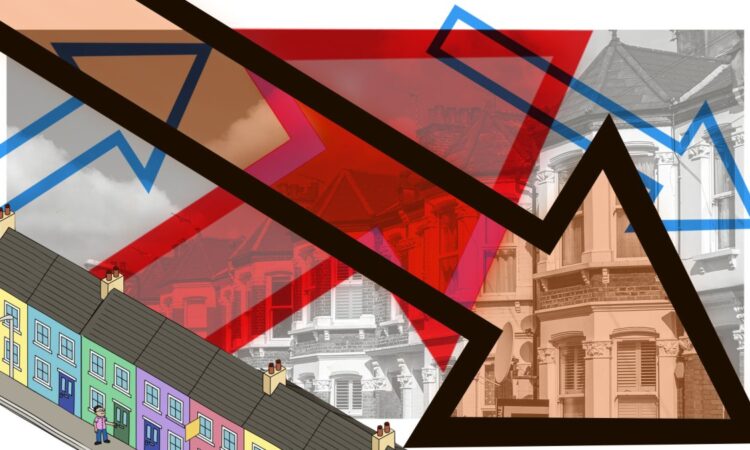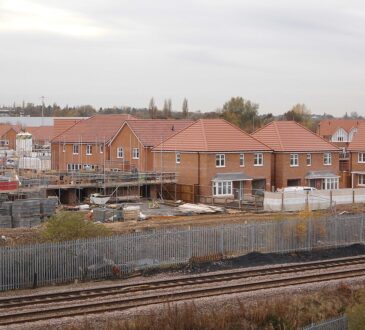
Forecasting house prices is something of a national obsession — just not one that the British are very good at. When mortgage interest rates soared in autumn 2022, some economists on the doom-mongering side predicted house price Armageddon, while others were calmer.
In recent months, analysts’ predictions have lurched around more erratically than at almost any time over the past few years. In November 2023, the Office for Budget Responsibility predicted that property prices would fall by 5 per cent this year. However, in March, that was revised to 2 per cent, as mortgage rates slowly fell.
Meanwhile, the estate agency Knight Frank predicts UK prices will rise by 3 per cent this year, which compares with a decline of 4 per cent predicted in October. Savills has also reversed its November forecast of a 3 per cent fall, replacing it in May with a prediction of a 2.5 per cent rise.
In its latest report, Halifax revealed prices had dropped by 0.2 per cent on average in June. That came as a surprise to economists, who had forecast a 0.2 per cent increase.
The reality is that these predictions mean little to people anyway. What all national analysis fails to take into account are hyperlocal fluctuations based on numerous factors such as the proximity of schools, bakeries and crime, to name just three examples.
Zoom into different parts of the country and the picture changes drastically. The Times has used data on millions of property sales in England and Wales, from the property data company PropCast, to build a comprehensive estimate of house prices at the neighbourhood level.
We have also used inflation to calculate how the value of homes in your area has changed in real terms. This data actually suggests that the typical home is worth no more than it was in 2007, before the financial crisis, once inflation is factored in.
To quote Franklin D Roosevelt, we think of real estate as “about the safest investment in the world”. Since 1990, while consumer prices have risen by 150 per cent, house prices in Britain have soared by about 400 per cent in value. Investing in property is usually inflation-proof.
Yet in reality, if you bought a home in 2007 outside southern England, it will probably be worth a lot less now once inflation is factored in.
The data reveals a drastic north-south divide in house prices since the financial crisis. The biggest rise was in the London borough of Hackney where prices rose by more than 40 per cent since 2007; neighbouring Waltham Forest and Haringey are not far behind. Yet in Co Durham, Blackpool and Sunderland, prices have fallen by nearly a third.
More recently, though, house prices have been sliding across the board, once inflation is factored in. Since June 2021, prices in inner London boroughs like Tower Hamlets and Lambeth have fallen by more than a fifth. Neighbourhoods where property was worth an average of £1 million or more experienced some of the biggest falls of them all.
The analysis of Land Registry data covers England and Wales only. Scotland’s housing market operates slightly differently: homes there are sold through a “blind bidding” system where sellers ask for offers over or around a minimum price — gazumping is virtually unheard of. Separate figures suggest house prices in Scotland have held up a little better than England’s over the past two years. And although prices in Northern Ireland have performed better than the other home nations since 2021, homes there are worth considerably less than they were in 2007.
• Rent to buy: meet the tenants renting their way onto the ladder
Actually, in nominal terms (that is, excluding inflation) they have defied expectations and stayed roughly flat. Why? The reason, the data suggests, is that buyers have simply sucked up the difference and paid a higher percentage of their salaries to compensate. New data from UK Finance shows that the average monthly mortgage payment is now 21.3 per cent of income — a level last seen in November 2008 and up from 17 per cent two years ago. For first-time buyers, it is 22.1 per cent.
First-time buyers are also taking out longer mortgages and having to raise bigger deposits to offset higher interest payments. “In the absence of a house price correction, we have ended up with an even worse version of the already failing housing market we had last year,” says Neal Hudson, analyst and founder of the consultancy BuiltPlace. Buyers are, in effect, paying more for less.
• Could dividing houses into flats ease the housing crisis?
Capital Economics, which predicted that house prices would fall by 6 per cent in 2023, says that demand from cash buyers that don’t need mortgages has been higher than expected. In addition, according to Andrew Wishart, the research firm’s senior economist, fewer people have been forced to sell up than expected. Affordability stress tests in place since 2015 mean most homeowners have been able to afford the rise in payments, while unemployment remains low.
What next? The truth is we have little idea what is actually happening right now. The Land Registry data used in our analysis, for example, has a substantial delay because it captures the market as it was more than six months ago. This is simply because of the time it takes for a sale to be completed, and the time it then takes the Land Registry to process the data and upload it.
How we made our calculations
We matched millions of property sales from the Land Registry, stretching back two decades, with their corresponding neighbourhood (which the Office for National Statistics calls “middle super output areas”). These are geographic areas in England and Wales, each with a population of about 8,000 people.
• Seven ways to add value to your property
A rolling yearly average was calculated for each neighbourhood. This was then matched with consumer price inflation data: this meant we could calculate what properties in each area would sell for in today’s prices.
The average does not take into account variations in the types of property sold. It is also a conservative estimate of change, simply because it takes an average of prices over the previous 12 months.




